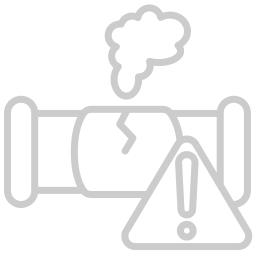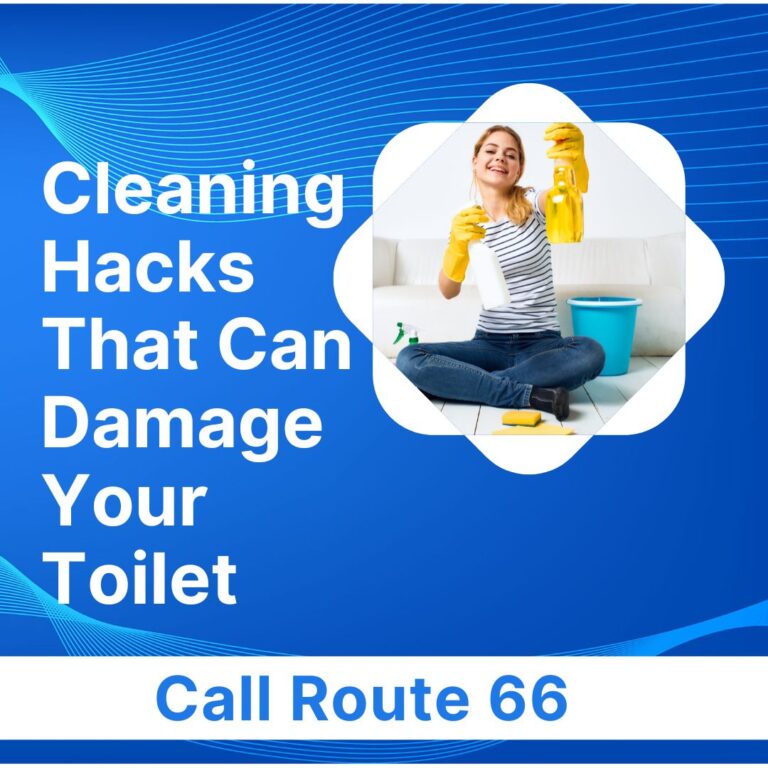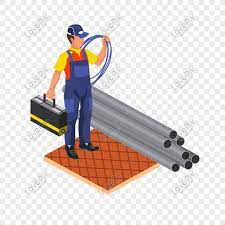Cleaning Hacks That Can Damage Your Toilet
Maintaining a clean toilet is essential for a hygienic bathroom. However, not all cleaning hacks found online or passed down through generations are safe for your toilet. Some can cause significant damage, leading to costly repairs or replacements. We’ll explore common cleaning hacks that can harm your toilet and provide safer alternatives to keep your toilet sparkling clean.
The Problem with DIY Cleaning Hacks
DIY cleaning hacks often promise quick and effective results using everyday household items. While some of these tips can be helpful, others can be detrimental, especially when it comes to your toilet. The materials and plumbing of toilets are not designed to withstand harsh chemicals or abrasive materials. Misusing cleaning agents can lead to the degradation of your toilet bowl, tank, and plumbing.
Common Cleaning Hacks to Avoid
Bleach Tablets in the Tank
Why It’s Harmful:
Placing bleach tablets in the toilet tank might seem like an easy way to keep your toilet clean with every flush. However, bleach is highly corrosive and can damage the rubber seals and gaskets inside the tank, leading to leaks and malfunctioning parts.
What to Do Instead:
Use bleach-based cleaners specifically designed for the toilet bowl, but avoid placing them directly in the tank. Regularly clean the toilet bowl with a toilet brush and a safe toilet cleaner.
Vinegar and Baking Soda Bombs
Why It’s Harmful:
Vinegar and baking soda are popular cleaning agents due to their natural properties. However, when mixed, they create a foaming reaction that can pressure the plumbing system. Additionally, the acidic nature of vinegar can erode the porcelain over time.
What to Do Instead:
Use vinegar and baking soda sparingly. Instead of creating a bomb, apply vinegar directly to the toilet bowl and scrub with a brush. For stubborn stains, let the vinegar sit for a while before scrubbing. Use baking soda for light scrubbing as needed.
Dropping Denture Tablets in the Tank
Why It’s Harmful:
Denture tablets contain bleaching agents and other chemicals that can harm the rubber parts in the toilet tank, similar to bleach tablets.
What to Do Instead:
Use denture tablets directly in the bowl for a short soak to help remove stains, but do not leave them in the tank.
Using Drain Cleaner for Clogs
Why It’s Harmful:
Drain cleaners contain harsh chemicals that can damage your toilet’s porcelain and the internal plumbing. They are also dangerous to handle and can cause severe injuries.
What to Do Instead:
Use a plunger or a toilet auger to remove clogs. If these tools don’t work, it’s best to call a professional plumber rather than resorting to chemical drain cleaners.
Pouring Boiling Water
Why It’s Harmful:
Pouring boiling water into the toilet can cause the porcelain to crack due to the sudden temperature change. This can lead to significant and costly damage.
What to Do Instead:
Use warm water instead of boiling water. Combine it with a safe cleaning agent and let it sit before scrubbing. For stubborn clogs, a mix of warm water and dish soap can help.
Using Hard Bristle Brushes
Why It’s Harmful:
Hard bristle brushes can scratch the porcelain surface of your toilet bowl, making it more susceptible to staining and bacteria build-up.
What to Do Instead:
Use a soft-bristle toilet brush or a non-abrasive scrubber designed for porcelain surfaces. Regular cleaning with a gentle brush will prevent the need for harsh scrubbing.
Mixing Different Cleaning Products
Why It’s Harmful:
Mixing cleaning products, especially those containing bleach and ammonia, can create toxic fumes that are hazardous to your health. These mixtures can also damage your toilet.
What to Do Instead:
Stick to one cleaning product at a time. Read labels and follow the instructions carefully to ensure safe and effective cleaning.
Safe and Effective Alternatives
Instead of relying on potentially harmful cleaning hacks, consider these safe and effective alternatives for maintaining a clean and functional toilet.
Regular Cleaning Routine
Establishing a regular cleaning routine is the best way to keep your toilet in good condition. Clean your toilet bowl at least once a week using a toilet cleaner and a soft-bristle brush. Don’t forget to clean the outside of the toilet, including the handle, seat, and base.
Natural Cleaning Solutions
If you prefer natural cleaning solutions, opt for diluted vinegar or a mixture of baking soda and water. These can effectively clean and deodorize without causing damage. Remember to rinse thoroughly to prevent any residue build-up.
Commercial Toilet Cleaners
Use commercial toilet cleaners that are designed specifically for toilet bowls and tanks. These products are formulated to be safe for your toilet’s materials and effective in removing stains and disinfecting.
Enzyme Cleaners
Enzyme cleaners are a great natural alternative for cleaning toilets. They break down organic matter and help maintain a clean and odor-free toilet. These cleaners are safe for your plumbing and the environment.
Plunger and Toilet Auger for Clogs
Invest in a good-quality plunger and a toilet auger to handle clogs. These tools are designed to clear blockages without damaging your toilet. Use them as the first line of defense before considering chemical solutions.
Tips for Maintaining a Clean Toilet
Flush Properly:
Ensure that you flush properly after each use to prevent the build-up of waste and stains.
Check for Leaks:
Regularly inspect your toilet for leaks or any signs of damage. Early detection can prevent more significant problems.
Use Toilet Seat Covers:
Use disposable toilet seat covers in public restrooms to avoid direct contact with potentially harmful bacteria.
Ventilation:
Keep your bathroom well-ventilated to prevent mold and mildew growth. Use an exhaust fan or open windows to allow air circulation.
Proper Disposal:
Only flush toilet paper and human waste. Avoid flushing sanitary products, wipes, or other items that can cause blockages.
Conclusion
While DIY cleaning hacks can be tempting, it’s crucial to consider their potential impact on your toilet. Avoid using harsh chemicals, abrasive materials, and methods that can damage the porcelain or internal components. Instead, adopt safe and effective cleaning practices that will maintain your toilet’s cleanliness and functionality without causing harm. Regular maintenance, natural cleaning solutions, and the right tools will ensure your toilet remains in excellent condition for years to come.







